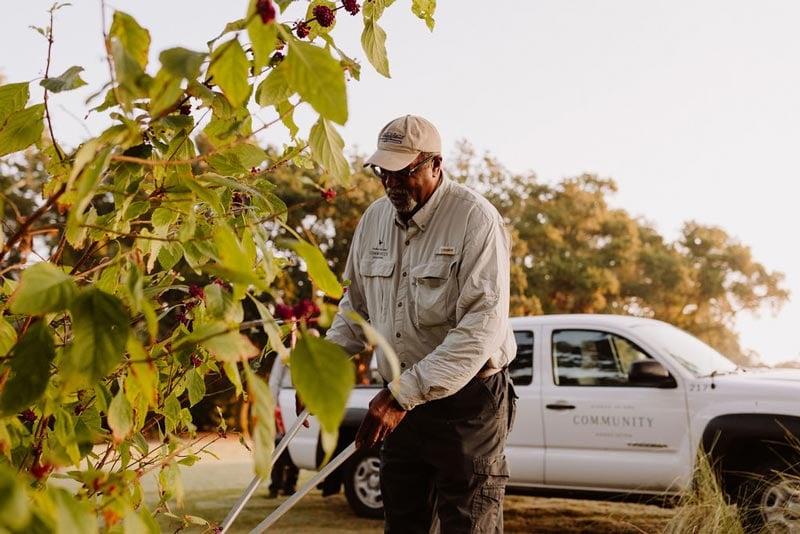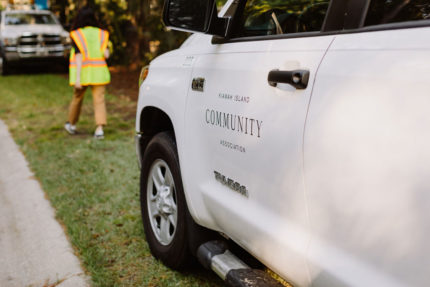Oct
07
2017
From The Blog
Supplemental Assessment Being Collected for Tropical Storm Irma Recovery Costs
Once the rain stopped, the wind calmed and the flooding subsided, the damage from Tropical Storm Irma was apparent. Though Kiawah fared well overall, it did experience the worst storm surge since Hurricane Hugo. Damage was worse than Hurricane Matthew last October in some ways, especially on the roads and trails. The pictures above and on the following page provide a glimpse at just how severe this storm surge was. KICA staff began clean up and repairs after the storm passed and, due to their skill and diligence, the island is returning to normal.
Immediately following the storm, the KICA Board of Directors held a special meeting for the sole purpose of discussing storm recovery. Staff reviewed initial damage assessments, as well as preliminary estimates on cost. The board then discussed and reaffirmed KICA’s Named Storm Policy, which calls for an assessment of members to cover these unbudgeted expenses.
The total restoration costs for Irma are projected to be $1.1million. This will result in a supplemental assessment of $225for each developed residential property. Owners of undeveloped lots will pay half that amount. Commercial property owners, including the resort and developer, collectively pay more than$150,000. The formula for calculating assessments is dictated by KICA’s governing documents (article V, Covenants for Assessments and Reserve Funds), and is not based on the value of each property. At the time of publication, the assessment was expected to be mailed to members in early October and payable within 30 days.
KICA Chairman of the Board Dave Singer appreciates that some members have expressed disappointment in having to pay another assessment. “Incurring assessments in two successive years for storm recovery is frustrating, but owning real estate on a barrier island does come with the risk of storm damage. Despite the need for recovery assessments the last two years, Kiawah dodged two major bullets, as Irma came in with less intensity than initially projected, and Matthew struck a glancing blow at low tide. Either storm could easily have inflicted greater and more costly damage. Puerto Rico, South Florida and Houston show the level of devastation that can be wrought by a hurricane. We’re thankful to have enjoyed over25 years without a storm assessment prior to 2016, and that the two recent storm assessments have both been less than the average round of golf on Kiawah.”
Advance and Recovery Planning
KICA was able to begin recovery efforts quickly because the association annually negotiates rates and contracts with a number of recovery specialists in advance of storm season. Key staff members meet daily as storms approach to discuss and implement preparation. Some staff members remain on-island for as long as safety permits, communicating about and attending to situations as they arise. They return to the island as soon as it is safe, to begin opening roads and securing unsafe areas.
Chair Singer notes, “KICA is fortunate to have the professional, dedicated staff it does. They worked 12-15 hours days, seven days a week, before, during, and after both storms, placing Kiawah above their personal home situations. Property owners who were not on-island immediately after the storms, returned to find little visible damage, hiding the significant amount of work done by our staff. Several property owners anonymously expressed their appreciation by having wristbands made for all employees, which say ‘Irma 2017 – I’m Appreciated,’ The other side reads, “Thanks for all your hard work.” On behalf of the board, I want to thank whomever organized this. It is well deserved and appropriately reflects the sincere appreciation felt by the board and the community.
Recovery Expense Break Down
Due to the annual agreements with area contractors and specialists, KICA was able to quickly determine recovery costs. During and immediately post-storm, additional conversations occurred to discuss the specific services required.
The cost breakdown for recovery expenses is as follows:
• Landscape clean-up including tree companies, third-party landscape crews, debris removal, vacuum truck for storm drains, KICA staff overtime, supplies, and bridge inspections: $273,000
• Landscape mitigation including replacement of shorted-out irrigation controllers, plants, turf and pine straw: $124,000
• Pond mitigation including aerator repairs and replacement, pond edge erosion control at washouts, fish restocking, and mosquito abatement (associated with standing storm water and the wash-out of prior larvicide treatments): $47,000
• Dock repairs at Rhett’s Bluff and Bass Pond: $65,000
• Road washout repairs: $274,000
• Leisure trail washout repairs: $57,000
• Boardwalks: $200,000
• Gate controller repairs: $31,000
Insurance
KICA insures assets which can be traditionally insured, such as buildings and vehicles. Annually, staff work with professionals to develop insurance program recommendations, which are then reviewed by the Finance Committee and the board prior to approval and implementation.
Infrastructure (such as roads, leisure trails, drainage pipes, docks, and boardwalks) and cleanup costs are not insured, because coverage is either unavailable or cost prohibitive. KICA has made queries about coverage, and has been told the same thing by brokers and peers at community associations around the country. Within the past year, this type of coverage was priced in the neighborhood of $100,000 per $1 million in coverage, with a $5 million deductible.
Reserves
KICA develops reserves to replace roads, bridges, boardwalks and other infrastructure based on projections of expected useful life, ensuring funds are available when an asset needs to be replaced. Reserves are not held for natural disasters. Therefore, when material costs are incurred for storm clean-up, they must be recouped by an assessment.
KICA has not historically established a natural disaster fund for several reasons. First, there has been a long-standing philosophy dating back to Hurricane Hugo in 1989 that these unusual events
are paid for by those who own property at the time events occur. Property owners didn’t pay additional assessments for storm clean-up costs in the 25+ years between hurricanes Hugo and
Matthew. If the association decided to change this philosophy and build a storm reserve, it would require the same property owners that have just paid assessments for Matthew and Irma to pay even more to build the reserve for the next storm.
In addition, the covenants provide future KICA boards the authority to use funds in a storm reserve for non-storm purposes. Chair Singer notes, “Creating a restricted reserve would require a covenant amendment, which needs a 60%quorum and a 75% affirmative vote. This is a very high bar, and considering the low cost of storm damage over the last 30years, your board believes the problems with creating this type of reserve outweigh the benefits.”
Singer shares the community’s hope for another long period without major storm damage, like the 27 years between Hugo and Matthew. “But the next storm will come eventually, and so will the next storm assessment. We appreciate our members’ understanding and support as we work together to preserve the island we all love.”

